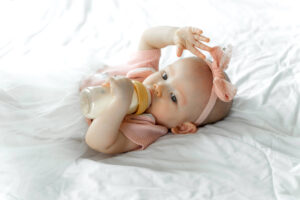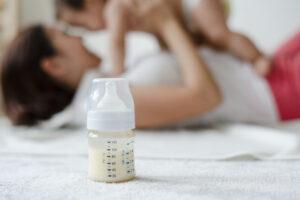
Understanding the Importance of a Quality Baby Bed for Newborns
A baby’s first bed is a crucial element in ensuring their safety, comfort, and well-being. Choosing the right baby bed for your newborn can be a daunting task, but with the right guidance, you can make an informed decision. In this article, we will explore the different types of baby beds available, their features, and tips to help you choose the perfect bed for your little one.
Types of Beds for Baby
There are various baby bed options to consider for your newborn, each with its own set of benefits and features. We will discuss some popular options below.
Bassinets
Bassinets are small, portable baby beds suitable for newborns up to 4-6 months old. They are often used for the baby’s first few months, providing a cozy, secure sleeping environment. Bassinets are great for parents who want to keep their baby close by, as they can easily be moved from room to room.
Cribs
Cribs are larger, more permanent baby beds designed for infants and toddlers. They provide a safe, secure space for your baby to sleep and grow. Cribs come in various styles, materials, and sizes, and many can be converted into toddler beds or daybeds as your child grows.
Moses Baskets
Moses baskets are lightweight, portable baby beds made from natural materials such as palm leaves or wicker. They are suitable for newborns up to 3-4 months old and provide a cozy, snug environment for your baby to sleep. Moses baskets can be placed on a stand or directly on the floor.
Co-sleepers
Co-sleepers, also known as bedside cribs, attach directly to the parents’ bed, allowing for close proximity and easy access to your baby throughout the night. Co-sleepers are suitable for newborns and infants up to 6 months old, providing a safe, separate sleeping space while still maintaining closeness to the parents.
Key Features to Consider When Choosing a Baby Bed
When selecting the perfect baby bed for your newborn, consider the following features to ensure you make the best choice for your family’s needs.
Safety Standards
Ensure the baby bed you choose meets or exceeds all safety standards set by your country or region. Look for certifications and endorsements from reputable organizations to guarantee a safe and secure sleeping environment for your baby.
Size and Space
Consider the size of the baby bed and the available space in your home. Make sure the baby bed you choose fits comfortably in your baby’s nursery or your bedroom, if you plan to keep your baby close at night.
Adjustability and Longevity
Some baby beds offer adjustable features, such as mattress height or convertible designs that grow with your child. Choosing a baby bed with these features can provide long-lasting value and save you money in the long run.
Ease of Cleaning
Babies can be messy, so it’s essential to choose a baby bed that is easy to clean. Look for options with removable, washable covers or bedding to make cleanup a breeze.
Portability
If you plan to travel or move the baby bed frequently, consider a portable option such as a bassinet, Moses basket, or travel crib. These options are lightweight and easy to transport, making them ideal for families on the go.
Tips for Creating a Safe and Comfortable Sleeping Environment
Once you’ve chosen the perfect baby bed for your newborn, follow these tips to create a safe and comfortable sleeping environment.
Firm Mattress
Choose a firm mattress that fits snugly in the baby bed, leaving no gaps between
the mattress and the bed frame. A firm mattress reduces the risk of suffocation and provides proper support for your baby’s growing body.
Proper Bedding
Opt for fitted sheets that are designed specifically for your baby bed’s mattress size. Avoid using loose blankets, pillows, or stuffed toys in the baby bed, as these can pose a suffocation hazard for your newborn.
Room Temperature
Maintain a comfortable room temperature for your baby’s sleeping environment, ideally between 68-72°F (20-22°C). Avoid overdressing your baby and use a wearable blanket or sleep sack instead of loose blankets to prevent overheating.
Positioning
Place your baby on their back to sleep, as this is the safest sleeping position to reduce the risk of sudden infant death syndrome (SIDS). Keep your baby’s head and face uncovered to ensure proper airflow and reduce the risk of overheating.
Safe Sleep Practices
Establish a consistent bedtime routine and create a calm, soothing sleep environment for your baby. Avoid using sleep positioners, as they can pose a suffocation hazard. Keep the baby bed free of toys, pillows, and other items that could obstruct your baby’s airway.
Additional Accessories for Your Baby Bed
Once you have chosen the ideal baby bed for your newborn, consider adding these useful accessories to enhance your baby’s sleep environment and make your life as a parent a little easier.
Mobiles
Mobiles are decorative accessories that hang above your baby’s bed and provide visual stimulation. They can be instrumental in helping your baby develop their visual skills and keeping them entertained. Choose a mobile that complements your nursery’s theme and ensure it is securely attached to the baby bed or ceiling.
Nightlights
A soft nightlight can create a soothing atmosphere in your baby’s nursery, making it easier for them to fall asleep and providing comfort during nighttime feedings or diaper changes. Select a nightlight with a dimming function or timer to control the brightness and duration of the light.
White Noise Machines
White noise machines can help drown out household noises and create a calming environment for your baby to sleep. These machines play a variety of sounds, such as ocean waves, rain, or gentle lullabies, which can help your baby relax and fall asleep more easily. Look for a white noise machine with adjustable volume and a timer function to ensure the sound doesn’t play all night long.
Baby Monitors
Baby monitors allow you to keep an eye or ear on your baby while they sleep, providing peace of mind and allowing you to attend to their needs quickly. Choose between audio-only monitors, video monitors, or smart monitors that connect to your smartphone for additional features and convenience.
Swaddling Blankets or Sleep Sacks
Swaddling blankets or sleep sacks are essential accessories for keeping your baby warm and secure during sleep. Swaddling can help soothe your baby and prevent them from waking due to their startle reflex. Choose swaddling blankets or sleep sacks that are breathable, made from soft, natural materials, and are appropriate for your baby’s age and weight.
Caring for Your Baby Bed and Accessories
Proper care and maintenance of your baby bed and its accessories can help prolong their lifespan and ensure your baby’s safety and comfort.
Regular Cleaning
Clean your baby bed and accessories regularly, following the manufacturer’s care instructions. Wash bedding, sleep sacks, and soft toys in gentle detergent and hot water to remove dirt, dust, and allergens. Wipe down the baby bed frame, mobiles, and other hard surfaces with a damp cloth and mild cleaning solution.
Inspect for Damage
Regularly inspect your baby bed and accessories for any signs of wear or damage. Tighten any loose screws, bolts, or other hardware, and replace any damaged or broken parts as needed. Always follow the manufacturer’s guidelines for repairs and replacements.
Follow Expiration Dates
While some baby beds and accessories can last for several years, others have a shorter lifespan. Pay attention to expiration dates, particularly for items like mattresses and car seat attachments, to ensure they continue to provide a safe sleeping environment for your baby.
Final Thoughts
Investing time and effort into choosing the perfect baby bed for your newborn and enhancing it with useful accessories can significantly impact your baby’s safety, comfort, and overall well-being. By following the tips and guidelines outlined in this article, you can create a nurturing sleep environment for your little one that promotes healthy growth and development. Remember that every baby is unique, and what works for one family may not work for another. Trust your instincts and make choices that best suit your baby’s needs and your family’s lifestyle.




